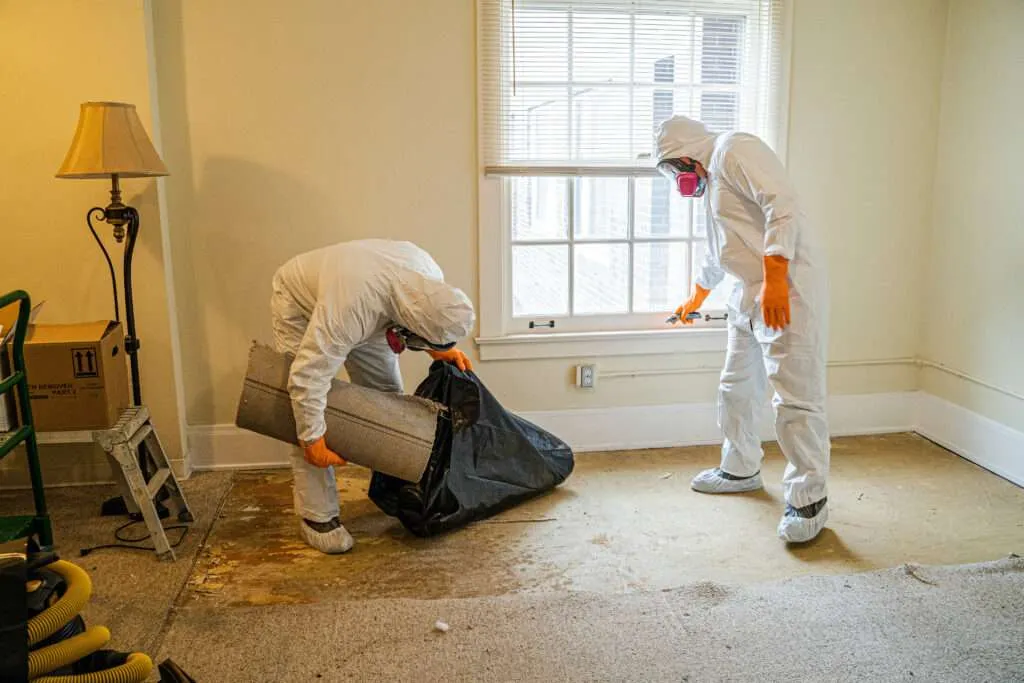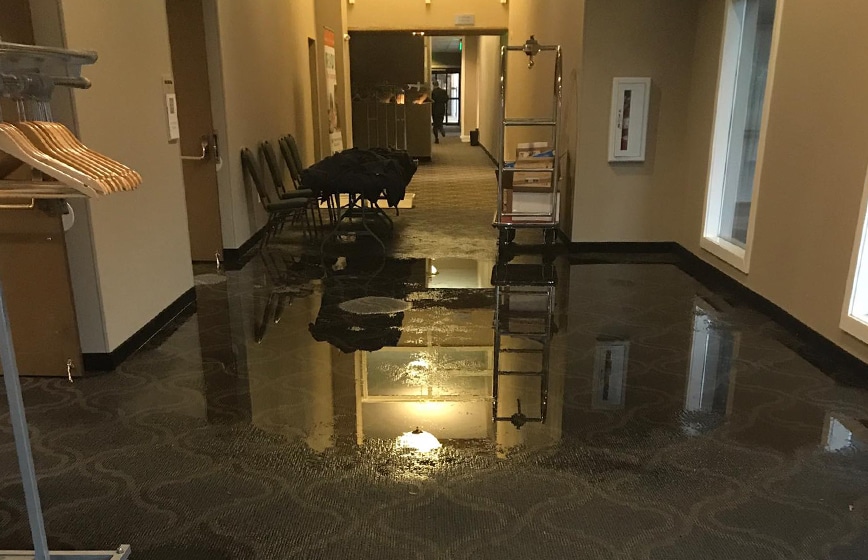Water Damage Restoration common questions answered
Wiki Article
Water Damage Restoration 101: Recognizing the Process and Cost
Water damage can strike unexpectedly, leaving house owners in a state of complication. Recognizing the remediation process is necessary for reliable recuperation. From examining the damage to choosing the ideal company, each step affects the total result and expense. Variables such as the kind of water damage and necessity likewise play a significant role. What are the specific techniques made use of in reconstruction, and just how can one plan for possible costs?Kinds of Water Damage
Water damage can emerge from numerous sources, each providing special difficulties for remediation. The three primary kinds of water damage are classified based upon contamination levels: clean water, gray water, and black water. Tidy water stems from sources like broken pipelines or rain, presenting marginal wellness dangers. Gray water, which includes wastewater from sinks or washing equipments, consists of pollutants that may cause pain or illness if ingested. Black water, the most harmful classification, comes from sewer or floodwaters, consisting of dangerous germs and pathogens. Each kind demands specific reconstruction methods and safety actions to successfully deal with the damage and reduce health threats. Comprehending these differences is vital for homeowners and specialists associated with the water damage reconstruction process.First Assessment and Inspection
A comprehensive preliminary analysis and examination are vital action in the water damage repair process. This stage starts with an expert reviewing the degree of the damage, recognizing the resource of the water breach, and identifying the kind of water included - Flood Cleanup Services. Professionals make use of customized devices to gauge dampness degrees in numerous products, such as walls, floors, and furnishings. Additionally, they evaluate structural integrity and potential carcinogen, including mold development. The searchings for from this examination educate the reconstruction strategy, assisting needed actions and source appropriation. Exact documentation of the damage is crucial for insurance policy cases and future reference. Overall, this initial assessment prepares for reliable restoration, ensuring a detailed feedback to the certain circumstance available

Water Removal Methods
Complying with the initial assessment, reliable water removal techniques are used to minimize damage and stop further concerns. These methods involve the usage of specific equipment such as industrial-grade vacuum cleaners and submersible pumps. The selection of technique depends on the quantity of water existing and the sort of products influenced. For standing water, submersible pumps are generally made use of for rapid elimination, while vacuums are suitable for extracting water from rugs and upholstery. Additionally, advanced approaches like water extraction floor coverings might be employed for hard-to-reach locations. The goal is to eliminate as much water as feasible, minimizing the possibility for mold growth and architectural damage. Prompt and effective water removal is vital in the total water damage remediation procedure.Drying Out and Dehumidification Process
Once the water extraction is complete, the drying and dehumidification process comes to be vital to recovering the afflicted area. This phase commonly utilizes industrial-grade dehumidifiers and air moving companies to properly lower wetness degrees. The dehumidifiers attract in wet air, eliminating excess moisture, while air moving companies flow air to accelerate evaporation. Monitoring devices is often utilized to track humidity and temperature levels, making certain perfect drying conditions. The duration of this procedure can differ relying on the level of the water damage and environmental variables. It is vital to extensively completely dry all affected materials, including walls, flooring, and home furnishings, to avoid mold growth and architectural damage. Correct implementation of this action is critical for a successful restoration outcome.Cleaning Up and Sanitizing Affected Locations

Initial Evaluation and Inspection
Prior to beginning any type of restoration initiatives, an extensive first evaluation and inspection of the impacted areas are crucial for effective cleaning and sanitizing. This process entails identifying the level of water damage, identifying the source of the water intrusion, and examining the products affected. Assessors commonly try to find indicators of mold and mildew development, structural honesty issues, and harmed belongings. The evaluation additionally includes inspecting dampness degrees using customized equipment to guarantee no concealed water pockets continue to be, as these can lead to additional difficulties. Recording the findings is crucial for intending the next steps in the remediation procedure. A comprehensive first assessment makes it possible for remediation specialists to develop a targeted strategy for effective cleaning and disinfecting, ultimately minimizing damage and health dangers.Cleansing Techniques and Products
Efficient cleansing and disinfecting of water-damaged areas need a selection of techniques and products tailored to the details products influenced. For permeable surfaces like drywall and carpeting, extraction methods are vital to eliminate excess wetness, followed by deep cleaning with specialized detergents. Non-porous materials such as floor tile or steel can be cleaned up utilizing commercial-grade cleaners that effectively remove impurities. Heavy steam cleaning is another reliable strategy, specifically for rugs and upholstery, as it uses heats to get rid of germs and mold. In addition, eco-friendly items are progressively popular for their safety and security and efficiency. Inevitably, picking the ideal cleansing approaches and items not only guarantees immediate cleanliness but also help in protecting against further damage and carcinogen connected with water intrusion.Sanitization and Disinfection Approaches
When attending to water damage, proper sanitization and sanitation techniques are necessary to assure the security and health of the afflicted environment. After preliminary cleaning, surface areas need to be treated with proper anti-bacterials to get rid of virus, mold, and microorganisms that prosper in wet problems. Typical techniques include the usage of EPA-approved chemical disinfectants, which can be used with splashing or wiping methods. In addition, ultraviolet (UV) light systems can successfully disinfect areas by counteracting microorganisms without severe chemicals. The selection of approach commonly depends upon the sort of materials affected and the degree of contamination. Inevitably, extensive sanitization not just restores a safe space yet additionally aids prevent future wellness threats connected with remaining dampness and mold and mildew growth.
Fixings and Restoration Options

Factors Affecting Restoration Costs
The extent of water damage straight affects the remediation costs homeowners can anticipate to sustain. Aspects such as the resource of the water, the duration of direct exposure, and the damaged materials significantly affect rates. Clean water damage from a damaged pipeline is usually less expensive to bring back contrasted to damage created by sewage (Flood Cleanup Services). Additionally, the degree of contamination dictates the demand for specialized cleansing and disposal solutions, additionally raising costs. Geographic area likewise plays a function, as regional labor prices and availability of remediation services can vary. Ultimately, the necessity of the action impacts expenses; quicker treatments generally cause reduce general costs by stopping more damage. Recognizing these aspects is crucial for house owners when estimating restoration costsThe 3 key types of water damage are classified based on contamination degrees: clean water, gray water, and black water. A comprehensive first evaluation and examination are crucial actions in the water damage restoration process. For standing water, completely submersible pumps are generally used for fast elimination, while vacuums are ideal for removing water from rugs and upholstery. The level of water damage directly impacts the restoration sets you back property owners can expect to sustain. Clean water damage from a damaged pipeline is usually much less pricey to recover contrasted to damage created by sewer.
Report this wiki page